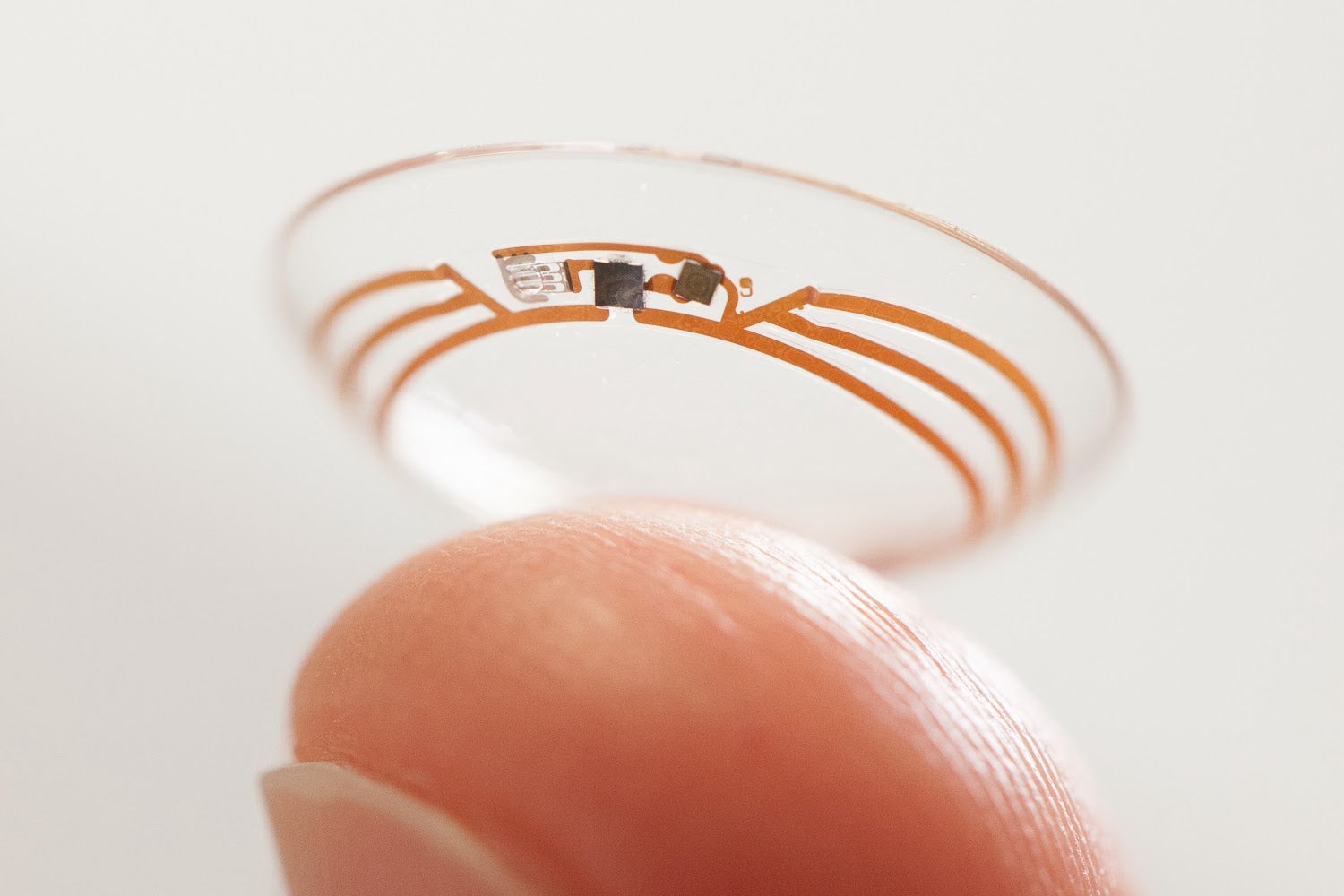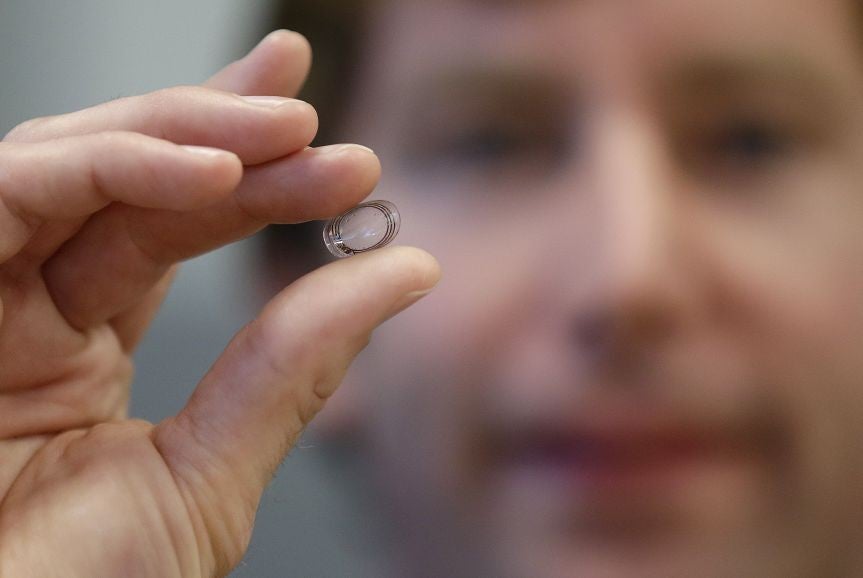Google unveils smart contact lens prototype for diabetics
Miniaturized sensors monitor wearers' glucose levels from their tears, saving diabetics from the disruption of regular blood checks or embedded sensors

Google has revealed a prototype for a smart contact lens designed to help diabetics by monitoring glucose levels in the wearer’s tears.
The technology is being developed by the search giant’s ‘X’ lab who have created special miniaturized electronics necessary to take the readings. Google says that the sensors are so small that they “look like bits of glitter”.
At present diabetic suffers have to either wear glucose monitors embedded under their skin or administer their own regular blood tests to ensure that their glucose levels safe. It's thought that the disease affects one in every 19 people on the planet.
“Uncontrolled blood sugar puts people at risk for a range of dangerous complications, some short-term and others longer term, including damage to the eyes, kidneys and heart,” said Google in a blog post announcing the new technology.
“A friend of ours told us she worries about her mom, who once passed out from low blood sugar and drove her car off the road.”
The current generation of the technology is capable of taking a reading once per second using sensors sandwiched between two layers of a soft contact lens.

Google also hopes that a second generation of lens could integrate LED lights into the design, lighting up in the corner of the wearers’ vision to provide an early warning “that glucose levels have crossed above or below certain thresholds.”
Project co-founders Brian Otis and Babak Parviz say that they are currently holding discussions with the FDA (the US agency responsible for public health regulation) and that they are looking for partners to help bring the product to market.
They predict that it will take at least five years for the product to reach consumers.
“It’s still early days for this technology, but we’ve completed multiple clinical research studies which are helping to refine our prototype,” says the company.
“We hope this could someday lead to a new way for people with diabetes to manage their disease.”
Join our commenting forum
Join thought-provoking conversations, follow other Independent readers and see their replies
0Comments